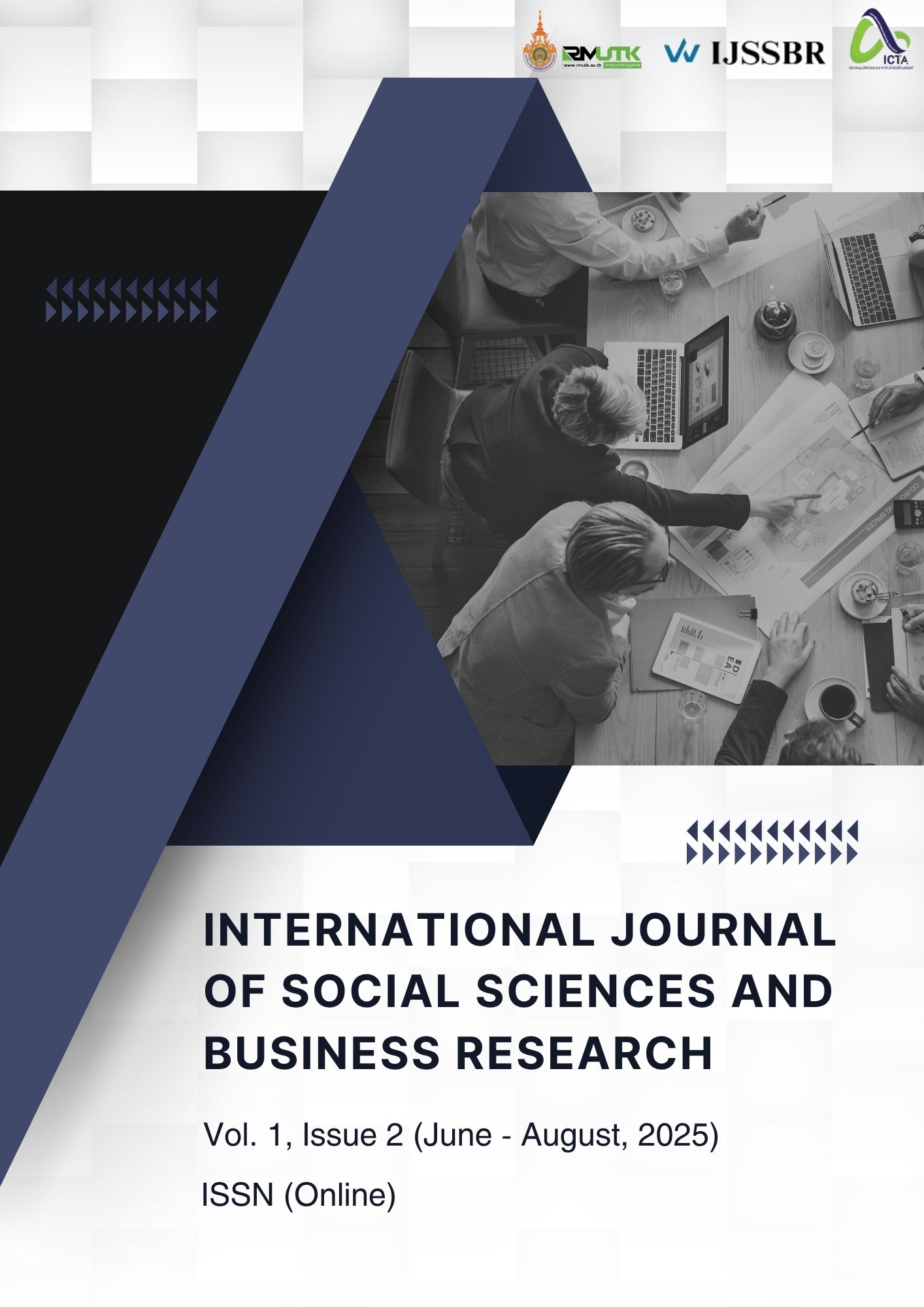The Impact of Online Reference Groups on Shared Green Consumption Behavior: The Mediating Role of Natural Empathy
Keywords:
online reference groups; natural empathy; shared green consumption behavior; SOR theory; empathy–altruismAbstract
Purpose
This study investigates how informational, normative, and interactional influences from online reference groups (ORG) drive Shared Green Consumption Behavior (SGCB) via Natural Empathy (NE). Grounded in Stimulus–Organism–Response (SOR) theory and the empathy–altruism hypothesis, it addresses a critical gap in understanding affective mechanisms in digital green‐marketing.
Methods
A cross‐sectional survey of 409 Chinese internet users was conducted in May–June 2024. Data were analyzed using SPSS 27.0 for reliability and descriptive statistics, and Mplus 7.0 for structural equation modeling with bootstrapped mediation (5 000 resamples).
Findings
(1) ORG positively predict SGCB (β = .61, p < .001). (2) ORG foster NE (β = .65, p < .001). (3) NE predicts SGCB (β = .57, p < .001). (4) NE partially mediates the ORG→SGCB relationship (indirect = .53; 95% CI [.54, .71]).
Implications
Green‐sharing platforms should combine clear informational content (e.g., usage tutorials) with empathy‐evoking storytelling (e.g., conservation narratives) and interactive community features (e.g., live Q&A) to deepen NE and enhance SGCB.
Originality
This research extends the SOR model to digital reference‐group contexts and empirically identifies NE as a crucial affective mediator in collaborative green consumption.
References
Albinsson, P. A., & Perera, B. Y. (2012). Alternative marketplaces in the 21st century: Building community through sharing events. Journal of Consumer Behaviour, 11(4), 303–315. https://doi.org/10.1002/cb.1388
Batson, C. D., Duncan, B. D., Ackerman, P., Buckley, T., & Birch, K. (1995). Is empathic emotion a source of altruistic motivation? Journal of Personality and Social Psychology, 38(1), 1–12. https://doi.org/10.1037/0022-3514.38.1.1
Belk, R. (2014). You are what you can access: Sharing and collaborative consumption online. Journal of Business Research, 67(8), 1595–1600. https://doi.org/10.1016/j.jbusres.2013.10.001
Browne, M. W., & Cudeck, R. (1992). Alternative ways of assessing model fit. In K. A. Bollen & J. S. Long (Eds.), Testing Structural Equation Models (pp. 136–162). Sage.
CNNIC. (2024). Statistical report on Internet development in China (53rd ed.). China Internet Network Information Center.
Deutsch, M., & Gerard, H. B. (1955). A study of normative and informational social influences upon individual judgment. Journal of Abnormal and Social Psychology, 51(3), 629–636. https://doi.org/10.1037/h0046408
Fornell, C., & Larcker, D. F. (1981). Evaluating structural equation models with unobservable variables and measurement error. Journal of Marketing Research, 18(1), 39–50.
Guan, J. (2015). Interactive information and the sustaining of online reference groups. Information & Management, 52(6), 685–697. https://doi.org/10.1016/j.im.2015.03.002
Hamari, J., Sjöklint, M., & Ukkonen, A. (2016). The sharing economy: Why people participate in collaborative consumption. Journal of the Association for Information Science and Technology, 67(9), 2047–2059. https://doi.org/10.1002/asi.23552
Hoffman, M. L. (2008). Empathy and prosocial behavior. In M. Lewis, J. M. Haviland-Jones, & L. F. Barrett (Eds.), Handbook of Emotions (3rd ed., pp. 440–455). Guilford Press.
Israel, G. D. (1992). Determining sample size (Extension Circular PEOD-6). University of Florida.
Mont, O. (2004). Institutionalisation of sustainable consumption patterns based on shared use. Ecological Economics, 50(1–2), 135–153. https://doi.org/10.1016/j.ecolecon.2004.03.022
Moeller, S., & Wittkowski, K. (2010). The role of attitudes in consumers’ willingness to participate in collaborative consumption. Psychology & Marketing, 27(11), 970–986. https://doi.org/10.1002/mar.20374
Mullick, J. (1992). Determining sample size. University of Florida, Institute of Food and Agricultural Sciences, PEOD-6. [Note: Israel (1992) reprint.]
Nunnally, J. C., & Bernstein, I. H. (1994). Psychometric Theory (3rd ed.). McGraw-Hill.
Park, C. W., & Lessig, V. P. (1977). Students and housewives: Differences in susceptibility to reference group influence. Journal of Consumer Research, 4(2), 102–110. https://doi.org/10.1086/208675
Preylo, C., & Arikawa, H. (2008). “It’s my child as much as yours”: The implications of empathy for attitudes towards animal-based foods. Environmental Education Research, 14(1), 97–110. https://doi.org/10.1080/13504620701843332
Schultz, P. W. (2001). The structure of environmental concern: Concern for self, other people, and the biosphere. Journal of Environmental Psychology, 21(4), 327–339. https://doi.org/10.1006/jevp.2001.0227
Sevillano, V., Sánchez, M., & Mosquera, P. (2007). The importance of empathy in environmental moral reasoning: Toward a more comprehensive approach. Journal of Environmental Psychology, 27(3), 252–264. https://doi.org/10.1016/j.jenvp.2007.05.003
Wang, X. (2021). Scale development for shared green consumption behavior. Journal of Cleaner Production, 279, 123–134. https://doi.org/10.1016/j.jclepro.2020.123456
Xu, Y. C. (2012). Online reference groups: Their nature, effects, and measurement. Journal of Interactive Marketing, 26(1), 53–62. https://doi.org/10.1016/j.intmar.2011.09.001
Zhou, L., & Zuo, M. (2012). Value-expressive and informational influences of online reference groups. Computers in Human Behavior, 28(5), 1772–1781. https://doi.org/10.1016/j.chb.2012.04.019
Zong, X., & Wang, Y. (2017). Natural empathy: Anthropomorphism and pro-environmental behavior. Environmental Psychology Review, 9(2), 233–247. https://doi.org/10.1007/s41606-017-0014-4
Downloads
Published
How to Cite
Issue
Section
License
Copyright (c) 2025 Rajamangala University of Technology Krungthep

This work is licensed under a Creative Commons Attribution-NonCommercial-NoDerivatives 4.0 International License.






